Parliamentary and presidential democracies in modern India can function only with the presence of political parties. Constitutionally, India is a quasi-federal structure with a parliamentary form of government. The heterogeneous nature of Indian society and the complexity of problems, it faced, nurtured a large number of political parties at the national, regional and local level. For over five decades since independence there emerged number of political parties with very little ideological difference. When we take the Indian National Congress as a National Movement in the freedom struggle, we find it representing variety of interests, classes, communities and castes. However, the sole aim of Indian National Congress during the pre-independence days was to achieve freedom for India. As and when the aim was achieved, the Congress transformed itself into a political party to take up challenge of running responsible governments at the Centre as well as States.
India had a period of stable governments at the Centre despite all the social and economic problems, primarily because of certain charismatic leaders Sardar Patel, Rajendra Prasad, Pandit Jawaharlal and Mrs Indira Gandhi who were supported by a galaxy of selfless leaders like Lal Bahadur Shastri, Kamaraj, Chavan and so on. Now such charismatic personalities are small in number but what we have what Churchill calls “men of straw” who are supported by a team of professional politicians.
During the uninterrupted rule of Jawaharlal Nehru, which lasted for about a period of 16 years, the Congress enjoyed monopoly in power both at the Centre and in various States. The charismatic personality of Nehru with his magnetic power to attract people at home and abroad brought India to an enviable position in political circles. The death of Nehru was a shock to the people and Congress Party. The gap created then was, to a certain extent, filled by his daughter Indira Gandhi. But the process of degeneration of the Congress Party started during her tenure and it culminated in the break-up of the party during her time. The disintegration of the Congress Party resulted in the winding up of the one-party dominant system as commonly described, paving the way for the mushroom growth of political parties. The emergence of a multi-party system creating new dimensions to the structure and functions of governments in the Indian polity began.
The framers of our constitution consciously adopted the British model of parliamentary democracy with a cabinet government, with its attendant concept of collective responsibility, as best suited to the conditions of India. Coalition is a direct descendant of the exigencies of a multi-party system in a democratic set up. It is a phenomenon of a multi-party government where a number of minority parties join hands for the purpose of running the government, which is otherwise not possible in a democracy based on a one-party system. A coalition government is framed where many political parties in a house agree to join hands on a common platform by striking their broad differences and form a majority in the house. It is an astonishing chorus of discords.
The term coalition has been derived from the Latin word meaning to go or grow together. Thus, interpreted the term coalition means an act of coalescing or uniting into one body or alliance. It indicates the combination of a number of bodies or parts into one body or whole. In the political sense, the term is used for an alliance or temporary union between various political groups for the exercise or control of political power. Prof Ogg defines it in the Encyclopedia of Social Science as a ‘co-operative arrangement under which distinct political parties or all events members of such parties unite to form a government of ministry’.1 A coalition is thus an alliance between two or more hitherto separate or even hostile groups or parties formed in order to carry on the governance and share the principle offices of the state.
In a parliamentary democracy, coalitions arise mainly as a result of political compulsion. These might result from racial, communal, religious, economic, social or political conflicts. It may also be formed due to emergency. Policies that are adopted by the coalition government are made by the coalescing parties and merely finalized by the leader of the coalition. In a conflictual coalition game each party opposes every other party and each party seeks its own maximum ministerial advantage.
Since 1989, sets of coalitions and minority governments in New Delhi is an important aspect of the paradigmatic shifts in the Indian political system in terms of political federalization and economic liberalization in the 1990’s. The coalition and minority governments at the Centre appeared after a long spell of Congress dominance until 1989. Although coalition governments at the Centre formally began in 1989 and have continued since, but the Janata Party (1977-79) in power at New Delhi also was a de facto coalition. The decade (1989-99) featured a series of unstable coalitions and minority governments, following each other like a game of musical chair. In India, the coalitions and minority governments are the outcome of the failure of the parliamentary system to satisfy the norms of getting absolute majority of seats in the Lower House (Lok Sabha) to form government. Since 1989, no single party has succeeded in winning comfortable majority in the House except in 2014 Parliamentary Elections when the Bhartiya Janata Party (BJP) could secure 282 seats. In 2014 elections, BJP-led National Democratic Alliance (NDA) claimed a historic victory when it secured 336 seats (including 282 of the BJP.)
The Indian society is moving in the direction of social fragmentation on the basis of identity and sub-identity politics, and multiple political parties for the representation of social identities and segmentary interests of diverse social groups have been established to participate in politics. It is logical that the ongoing process of fragmentation of the society is accelerating the process of fragmentation and multiplication of political parties too. It was not without reason that the BJP-led NDA (1999-2004) had as many 24 constituent parties and groups - with a pure regionalist party like the TDP of Andhra Pradesh extending support to the BJP-led NDA from “outside” - and that the Lok Sabha elections had been contested by forty five parties and groups.
Regional political parties and coalition politics have resulted in the furthering of criminalisation of politics. The problems of persons with criminal records entering electoral politics, and through them into the representative bodies, have received a big boost from the proliferation of regional political parties. The coalition politics have given them a national exposure at the cost of the credibility of the political system. Today, there are several leaders who are playing important roles in the regional and national politics while having some or the other criminal cases pending against them. With the help of regional parties, coalition politics has helped in spreading the malady of political corruption much more comprehensively throughout the Indian political system.2 Regional political parties do not give up their parochial approach and therefore are narrow in their outlook. These parties tend to get support through populism. In this system, power shifts from the Centre to States. All regional partners of a coalition have their stronger agendas and there is no national agenda. As a result, the States tend to become strong and the Centre becomes weak.3
The period from 1967 to 1977 witnessed the passage from one-party dominance to a multi-party politics. Several states had moved towards a two-party system, though two-parties vary from state to state. This change, since the 1989 elections, may mark the beginning of a new era in the party system. Political development over the last decade of 20th Century makes it clear that Indian politics now has a strong lower class thrust. This development, in combination with the increased influence of regional and state-based parties, mirrors a paradigm shift in politics. These parties have increased their vote share to 8-9 per cent of the popular vote. Two factors have contributed to the multiplication of parties: One has been the growing power of regionalism and regional parties; and the other, intensified pursuit of political power rather than disagreement over principle. This explains the fracturing of the Janata Dal in 1999, the formation of the Nationalist Congress Party (NCP) on the eve of the 1999 general election in Maharashtra and splits in the Congress and Bahujan Samaj Party (BSP) in UP in 1998.
Intensification of competitive politics changed the party system from being a rivalry between national parties to that of the regional parties. The nineties have witnessed a succession of minority or coalition governments. The coalition governments were formed in 1989, 1990, 1996, 1997, 1998, 1999 and 2004-2009) by several political parties. From 1989 to 1999 eight governments were formed. Many small parties have acquired disproportionate influence because the few seats they held were crucial to forming a coalition government. Since 1977, 138 state governments were formed; 40 were coalitions and their average life was not more than 26 months. At the national level, right from 1977 many parties have emerged to form the governments but they were not real coalitions.
Indira period witnessed the emergence of regionally-based parties as an alternative to the national political parties. The 1980’s finally was a testament to the devastation of the Congress party. From early dominance over much of the country, Congress was able to mobilise voters in only three states : Andhra Pradesh, HP and Kerala. In all other states Congress lost support,and their position in Maharashtra, Punjab, Tamil Nadu and Uttar Pradesh got sufficiently weakened. During Nehru’s time Congress dominance was over the entire Indian politics but after him the Congress became the biggest loser in the Hindi belt. Regional parties mainly made their gains at the expense of the Congress.
In the wake of changing political scenario, the multi-party system with the dominance of a single party soon gave way to political plurality. This development was a natural consequence of the diverse Indian population. Awakening of aspirations of regional, linguistic and cultural level, several political and social diversities come to the fore articulating ethnic, caste, religious and the like factors. As a logical corollary, various new political identities come to thrive mainly on regional consciousness.4 The regional consciousness differ from state to state and the coalition system is the one and only system that could comfortably accommodate the regional political parties.
Political coalitions, being compulsions of power-sharing and political accommodation need to be seen as emergence of a new level of political consciousness and maturity of Judgment, on the part of the voters. Instead of treating coalitions as a path towards political instability, they have to be seen as a sign of the electorates’ dissatisfaction with the dominant role of one single party leading to dissents, protests and extremism. It is a symbol of the voters’ maturity if they prefer political accommodation and power-sharing on the part of political parties, rejecting rigid postures and unitarian forces. 5 Coalition government consisting of two or more political parties to serve the government signifies the fulfilment of these conditions. Indian political parties since coalition era are not yet mature or committed enough to the requirements of parliamentary democracy. Many of state parties are new and adolescent in their behavior. Tolerance, understanding, consultation and compromise for the sake of democracy are totally lacking.
Coalitions have come to stay since 1989 which is obvious as no single party has secured a majority in the Lok Sabha except in 2014 elections when BJP crossed the half mark. In coalition era, the politics of “support from outside” has made the office of the Prime Minister a “lottery”, and this phenomenon has decisively weakened the governance at Centre. Regionalists came to play a very crucial role in the national politics since 1989 by either aligning with any of the two parties like the Congress and the BJP or by making calculations depending on the seats won by any of the two national parties in the Lok Sabha.
References:
1. D. Devanathan, Strengthening Coalition Experiment of Centre : A Few Suggestions, Third Concept, vol. 12, No 143, January 1999, p-26.
2. E. Sudhakar, Coalition Era in Indian Democracy, Third Concept, vol-18, No. 212, October 2004, pp-11-12.
3. Parvathy A.A., Emergence of Coalition System in India : Problems and Prospects, Third Concept, vol. 19, No. 217, March 2005, p-9.
4. Vidya Stokes, Coalition Governments Fault lines in Indian Polity, in Ajay Bhandery (ed), Sanga Sarkar Visasyank, Vidhan Sabha Secretariat, January — June, 2000, p-10.
5. Akhtar Majeed, Coalition Politics and Power Sharing, Manak Publications Pvt. Ltd,
New Delhi, 2000, p-2.
(Views expressed are of the author and do not necessarily reflect the views of the VIF)
Image Source: https://en.wikipedia.org/wiki/Indian_presidential_election,_2017

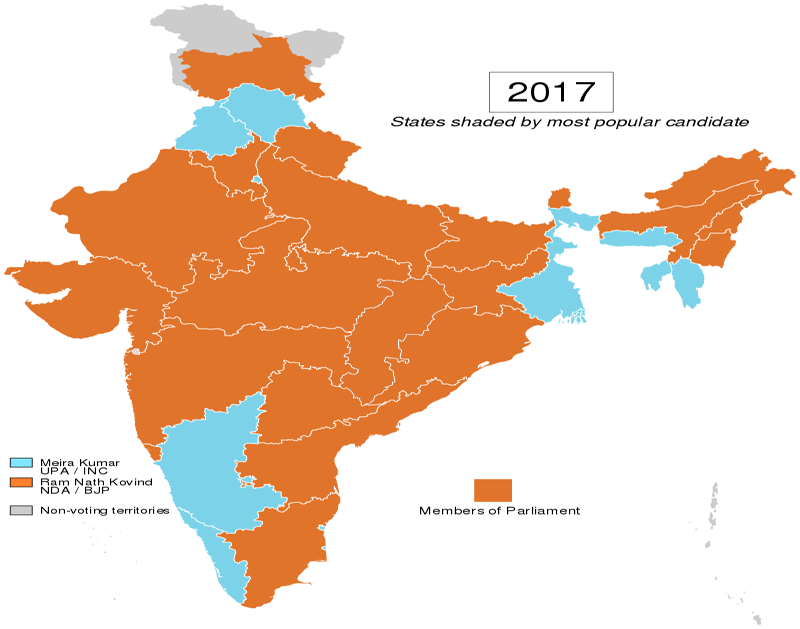
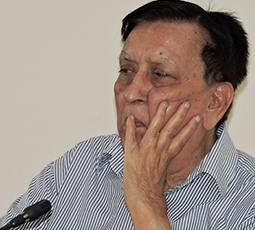


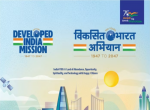
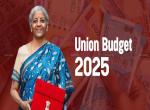



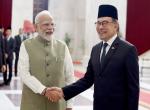
Post new comment